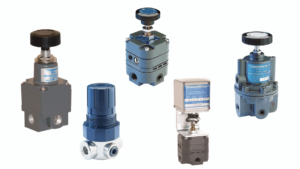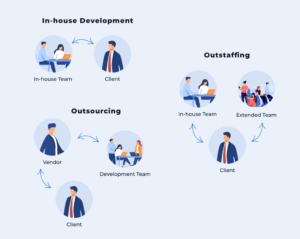With so many events out there, making yours distinguishable is more important than ever. Whether it’s a local fundraiser, a business conference, or a music festival, the success of your event hinges not just on the planning, but heavily on your promotional strategies. How do you rise above the noise of countless invitations and advertisements to capture the attention of your intended audience? This blog delves into the art and science of event promotion, offering innovative ideas and effective tactics that help you elevate your event from the ordinary, guaranteeing it the spotlight it truly deserves.
Traditionally, event promotion has relied on a mix of print and broadcast media to reach potential attendees. Flyers, posters, and billboards are placed in strategic locations, while radio and television ads seek to create a buzz within the local or target community. Direct mail, such as newsletters and personalized invitations, is sent to a curated mailing list, often based on past event attendance or demographic research. In addition, public relations tactics like press releases and media spots on local news segments are utilized to gain free publicity and legitimize events in the eyes of the public.
But times are rapidly changing, and traditional promotion methods alone often fall short. As the majority of people now consume information online, methods like print advertising or broadcast can miss large segments of the target audience who primarily rely on digital channels for news and entertainment. Moreover, the inundation of advertisements in our day-to-day lives has led to a phenomenon known as ‘ad fatigue,’ where potential attendees become desensitized to conventional marketing tactics. Traditional methods also lack the granular tracking and analytics offered by digital platforms, making it challenging to measure effectiveness and ROI (Return on Investment) accurately. It’s clear that to truly stand out, event promoters must pivot and adapt to more modern, integrated approaches that embrace the changes in consumer behavior. Here’s more about how you can stand out from the crowd when promoting your event.
Harnessing Social Media Dynamically
Social media is a powerhouse for event promotion, offering an array of platforms to target different demographics. Use visually compelling content like videos and stories to spark interest and encourage shares. Tailor this content to each social media’s specific audience — Instagram’s younger crowd might appreciate behind-the-scenes peeks, while LinkedIn professionals seek more informative posts about speakers and content. Leverage influencers and local personalities to amplify your message too. Partnering with these individuals can lend credibility and expand your reach. Moreover, use social media advertising with specific audience targeting to ensure your event appears in the feeds of potential attendees who share interests aligned with your event’s theme.
Interactive and Experiential Pre-Event Engagements
Creating interactive pre-event engagements can heighten interest and commitment to attending. Use a forward-thinking timely calendar, and host pre-event webinars or live Q&A sessions with speakers or entertainers. Giving potential attendees a taste of what’s to come can boost ticket sales and social shares. Gamify the promotion process too. Introducing challenges, scavenger hunts, or contests related to the event can make the promotional process fun and spread the word as participants share their experiences. Utilizing these experiential tactics not only stimulates excitement but also fosters a community around your event even before it begins.
Innovative Partnerships and Sponsorships
Consider establishing partnerships or sponsorships with other organizations. Cross-promotions with partners can introduce your event to a new audience. Find non-competitive entities that share a common target market and collaborate on promotions like giveaways or joint advertising efforts. Engage sponsors in innovative ways as well. Beyond financial backing, sponsors can contribute to the event experience, possibly providing technology for interactive displays or samples for attendees. Thoroughly integrate your sponsors in the event’s promotional narrative – having them co-host webinars or podcasts related to the event topic can add value and diversity to the promotional mix.
Leveraging Content Marketing
Content marketing can serve as a subtle yet powerful tool to draw attention to your event. Create valuable and relevant content related to your event’s theme. This could include blog posts, ebooks, infographics, or videos that educate and engage your audience. Utilize SEO strategies to improve visibility too. By incorporating keywords related to your event into your content, you can boost search engine rankings and organic traffic. Offering sneak peeks or insider information in your content can also generate buzz and anticipation leading up to the event.
Engaging Through Email Marketing
Email marketing, when done right, can be a highly effective channel for event promotion. Segment your email lists to send personalized invitations for greater effectiveness. Customizing your message to different segments based on past event engagement or specific interests can dramatically increase open rates and click-through. Use A/B testing for your email campaigns to determine what content resonates best with your audience, allowing you to refine your approach as the event approaches.
Optimizing the Power of User-Generated Content
Capitalize on the authenticity and reach of user-generated content to amplify your event’s presence. Encourage attendees to share their experiences and anticipation for the event on social media, using a designated hashtag to increase visibility and create a cohesive narrative. User-generated content like photos, videos, and testimonials not only serves as social proof but also as a lever for organic engagement. To incentivize participation, consider running a ‘share to win’ campaign, where attendees can win prizes for posting content related to your event. This approach not only entices engagement but also turns your audience into active promoters.
Successful event promotion in the current era calls for a creative, multi-faceted approach. Embracing digital and interactive strategies, leveraging powerful partnerships, and fostering user engagement are key to capturing attention and building excitement. By tailoring these tactics to your event and audience, you can drive interest, attendance, and ultimately ensure a successful and memorable experience for all involved.




